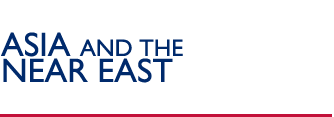 |
|
 |
 |
 |
| USAID Information:
External Links:
|
|
 |
 |
|
 |
 |
|
Morocco

SNAPSHOT
Date of independence: 1956
Capital: Rabat
Population: 29.8 million
Annual income per person: $1,570
Source: World Bank Development Indicators
CONTACTS
Mission Director
Monica Stein-Olson
American Embassy/Rabat
PSC 74, Box 022
APO AE 09718
Tel: 212-37-63-2010
Desk Officer
Cynthia Judge
Tel: (202) 712-4985
Email: cjudge@usaid.gov
http://www.usaid.gov/ma/

A rural woman in Amerzegane
(South of Morocco) was able to
improve her economic situation
and educate her children thanks
to USAID’s support to micro-credit
institutions, which today facilitate
access to financial services to
millions of Moroccans.
Overview
Morocco is the United States’ oldest friend in the region and was recently declared to be a major non-NATO ally. Under the leadership of King Mohammed VI, this stable, moderate Arab nation has launched itself on a path towards democratic participation in governance. Its measured pace of evolution is emblematic of a liberalizing nation committed to meeting the needs of its people while recognizing the value of stability in this corner of an unstable region. Morocco, however, still faces many complex challenges including persistent unemployment and inadequate access to housing, land, credit, and other productive resources. Poverty and illiteracy remain common, especially among women and femaleheaded households. Since 1957, USAID and Morocco have collaborated to address these issues and making real and substantial improvements in Moroccan lives. While there is much work to be done, the U.S. - Moroccan partnership has yielded positive results with the mutual goal of building a democratic, well-governed, and economically sound Morocco.
Programs
Economic Growth: Economic Opportunities
USAID’s economic program assists Morocco in successfully responding to the challenges and opportunities of the more liberalized trading environment that will be brought about by the free trade agreement with the United States, the association agreement with the European Union, other free trade agreements, the World Trade Organization Doha Development Round, and Morocco’s own reform efforts.
The U.S.-Morocco Free Trade Agreement, which went into effect in 2006, should boost trade and investment. However, Moroccan farmers may face stiff competition in crops such as wheat and oil seeds when agricultural tariffs are lowered. To make up for the lost income, USAID works with farmers to shift to crops with higher values and develop jobs in other industries like rural tourism. USAID also trains local organizations to research the tourist market and promote rural destinations. To improve the business climate, allowing Moroccan private enterprise to take advantage of the new trade opportunities, USAID assistance has helped to reduce the number of days needed to register a business from 60 to 11.
Investing In People: Education
Completion of primary school is 72 percent for girls and 79 percent for boys. However, those percentages plummet to 23 percent for boys and 22 percent for girls at the secondary level. Another challenge is illiteracy. Rates remain high, particularly for women. While 35 percent of men are illiterate, illiteracy rates for women average 60 percent, with up to 80 percent illiteracy among rural women.
USAID’s goal is to improve training opportunities for Moroccan youth and increase access to quality and relevant basic education (grades 1 to 9). USAID uses two approaches to achieve this: the basic education approach, which aims at improving retention rates and equipping ninth graders with portable and adaptable skills upon middle school graduation; and the “school-to-work” approach, which aims at creating close connections between training and employment at various post-middle school levels.
For young Moroccans closer to the job market, USAID focuses on training, especially in information technology, and building job connections to prepare youth for the workforce. This includes training in agriculture and tourism for students in technical institutes. USAID also works with local communities and businesses to improve the quality and content of basic education, strengthen school administration, and keep girls in school.
Governing Justly and Democratically
Since the early 1990s, Morocco has made steady, significant, and substantial progress in extending and implementing democratization and good governance reforms. In recent years, Morocco has witnessed a rejuvenation of its political parties and parliament and has focused considerable attention to empower local level actors through increased devolution of authority and decentralization of decision-making.
The quick pace of reforms and the emergence of new actors at various levels present strong opportunities for national and sub-national elected bodies to advance their democratic and good governance functions. The USAID program strives to support this progress by promoting a transparent system of governance that encourages public debate, supporting projects to improve leadership within municipal structures, and developing partnerships between citizens and government to deliver tangible results, especially at the local level.
Back to Top ^
|


